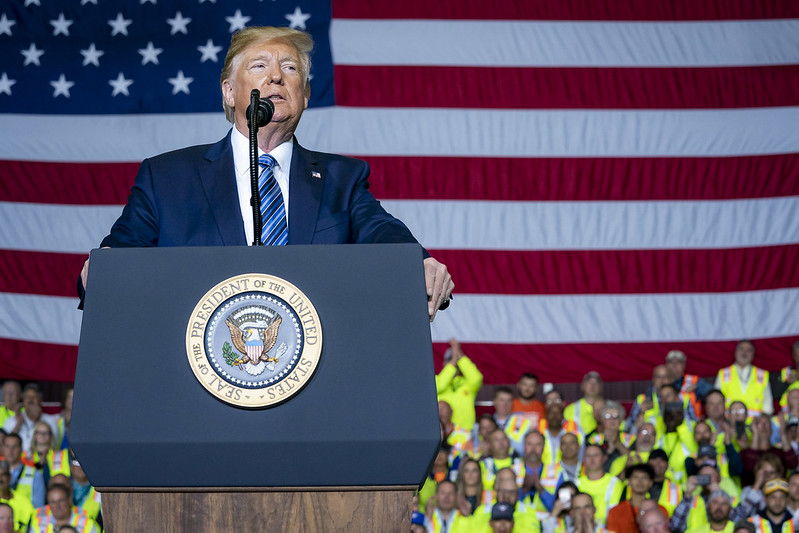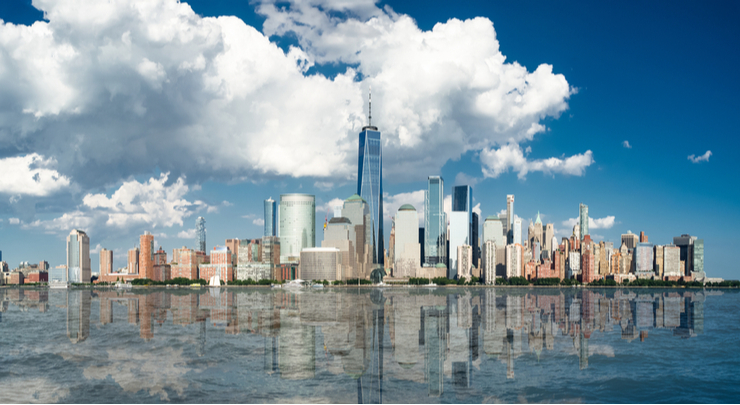
You are probably watching the rapid pace of decision-making happening in the Trump administration with awe and surprise after four years of what seemed like complete inactivity from the White House. At City Journal, Mark Lutter is hoping President Trump will turn his attention to a promise he made on the campaign trail to build ten new “Freedom Cities.” Lutter writes:
Many observers are struggling to keep up with the new Trump administration’s dizzying pace of executive orders and policy initiatives, so it’s no surprise that some big ideas have fallen by the wayside so far. But one of Trump’s best proposals from the campaign trail deserves more attention: building ten new “Freedom Cities.” As Trump described it, the cities, erected on federal land, would spark unprecedented innovation in fields like aerospace, construction, and manufacturing. Images of flying cars and next-generation factories instill the idea with futuristic flair.
The practicalities of Freedom Cities, however, remain undefined. Little serious policy work has been done to articulate what they are or how to implement them. I suggest that Freedom Cities be seen as a mechanism to experiment with policy and accelerate American dynamism.
Would-be builders of Freedom Cities should look to an unlikely example for inspiration: Shenzhen, China. The site of a Chinese experiment with capitalist reform, Shenzhen’s success tells us something about how to loosen America’s bureaucratic paralysis from the bottom up.
In the early 1980s, Chinese leader Deng Xiaoping made an historic decision. The Chinese government was in the process of establishing special economic zones (SEZs), which delegated authority, including the right to establish markets in labor, land, and capital, to municipal governments. Rather than placing the first SEZ in one of China’s well-established urban centers, Deng designated Shenzhen—an unassuming backwater, just north of Hong Kong—to test unprecedented market-oriented reforms.
Over time, Shenzhen became a laboratory for free-market ideas. Its proximity to Hong Kong, already a global trading hub, offered a ready flow of foreign capital, technology, and knowledge. Local officials were authorized to make decisions that deviated significantly from the uniform socialism that characterized most of China at the time. In this sense, Shenzhen was not just an economic experiment but an administrative one, testing whether localized autonomy could work better than centralized bureaucracy.
The results were swift and far-reaching. Shenzhen experienced spectacular growth, sprouting high-rise buildings and industrial parks in a matter of years. The city pioneered the creation of labor, land, and capital markets in China. Its success in attracting foreign investment spurred Beijing to replicate the model elsewhere, launching new SEZs across the coast. These enclaves propelled China’s transformation into one of the world’s largest economies.
Today, the United States faces its own problems of administrative sclerosis, problems not so different from those Shenzhen addressed. A sprawling federal bureaucracy—formed over decades by political mandates, crisis responses, and worker capture—has grown so large that it often moves independently of the elected government, frustrating policymakers and the public alike.
Action Line: Your Survival Guy has watched since 2020 as Americans have rushed to escape the city, and find a better America. That’s why I began publishing my annual Super States rankings, to guide Americans to better futures where they and their money are treated with respect by leaders. Be one of the first to receive my upcoming 2025 Super States list by clicking here to subscribe to my free Survive & Thrive letter.



